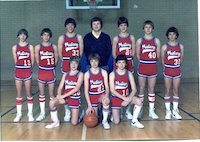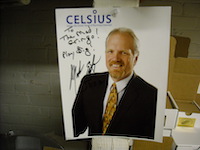|
"It's good. It's good. The job is done. We can go home now."
– NBA Finals MVP Nicola Jokic

This week my hometown basketball team, the Denver Nuggets, won a big trophy. They are NBA World Champions. As a kid I remember winning a red-white-and-blue Nuggets basketball in a raffle. (This was back in the ABA days when they last had a shot at a championship. They actually played with a red-white-and-blue ball!) This year's run included hearing from a lot of my childhood friends, reliving youth basketball glories.
As a 12-year-old I was lucky enough to play a game before the Nuggets took the court. We got a short tour of the lockers at McNichols sports arena and went on an hour before the pros warmed up. I don't remember much about the game, but I do remember who the Nuggets played: the Utah Jazz.
As I walked off the court and some of the pros were coming on to the floor, I walked into Jazz center, Mark Eaton.

Mark was 7'4". I wasn't full-grown, but I was pretty tall for a 13-year-old. It felt like I was eye-to-eye with his belly button. Pro players are not normal humans. They are so big, so fast, so talented. In 1983 the Nuggets and Jazz made it to the playoffs, but those were the Magic-Bird days, years before giant television contracts. The league minimum was $40K, or about $122K today. A few of the players lived in friend's neighborhoods. You could run into these giant people at the movies. Today the league minimum is between $1.7 million for a rookie, $3 million if you have 10 years experience. It's a different game.
I saw Mark Eaton at a trade show a few years ago. He was exhibiting a sports drink two booths away from mine. Before I knew who it was, I would see people taking pictures with him and think, "why is that guy standing on the table?" It took a minute to figure out who he was. It took a few more minutes before I told him about my brush with him in 1983. A short time later I learned his tropical shirt size was 3X tall. Then the people who hired him gave me a look, so I moved on. Reluctantly.

Good work, Nuggets. Good work.
|